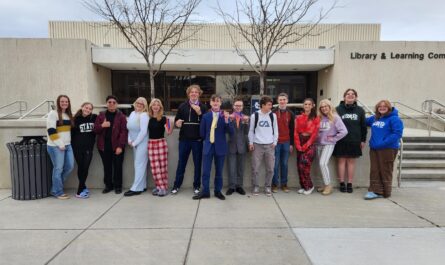For over ten years, students at NS have had the opportunity to donate blood through organizations such as Mountain Star and the Red Cross. While many NS students have donated, few may realize what happens after the blood is collected and how valuable their donations truly are.
“Every two seconds, there is someone in the U.S. who needs a blood transfusion,” Red Cross District Manager for Donor Recruitment in Utah, Julie Ledford said.
That statistic leads to 500 million patients in the U.S. alone who will need blood every year.
The Red Cross and many other institutions take donations from any qualified person to help fill the continuous need of blood. To help fill this need, NS hosts a blood drive three times a year.
After the blood has been collected, it goes through a series of tests and procedures before it is safe and ready to use.
One pint of blood is drawn from each eligible volunteer. The blood is then put into an iced cooler until it is transported to a laboratory where it is tested for the blood type, diseases, or any other abnormalities. Unsafe blood is discarded and the donor is notified.
The good blood is then put into a machine, called a centrifuge which spins the blood, separating it into three different parts: red blood cells, platelets, and plasma. After the blood has been separated, it is then ready for the hospital to call and order a supply of blood for anyone that needs it.
High school students are wanted and welcome to donate blood, though there are some requirements.
In Utah, donors must be at least 16 years old and weigh a minimum of 110 pounds, though it can vary based on a person’s height and gender. The donor must also be in good general health and feeling well the day of donation.
There are many ways to prepare to donate that will make it easier for both the donor as well as the person drawing the blood. These include getting a good night’s sleep, eating a good meal enriched with iron, drinking plenty of water, and avoiding caffeine.
“We love our young donors,” Ledford said. “We want to make sure they have the opportunity and ability to save up to three lives.”
Since the blood is broken down into three separate components, it has the potential to save more than one person.
“It’s fun to see students do selfless things and get in the spirit of it,” NS counselor Ben Cox said.
Cox coordinates the blood drives at the high school with the Red Cross and enjoys seeing students who participate.
“I think it is rewarding to know that what we’re doing can potentially save lives,” Cox said.
The number one reason people give blood is because they “want to help others.” Many students at NS feel the same.
“I’m cool with blood and needles,” senior Rebecca Benson said. “It doesn’t really bother me.” Benson donated at the last blood drive hosted at NS in November and believes that it is a life-saving act.
Sophomore Emily Barker shares similar feelings.
“I want to help people who need blood,” Barker said. Although she has never donated yet because of her age, she is excited to participate and to save lives. “I’m going to call myself a hero for going to one donation!”
Less than 38% of the population in the U.S. is eligible to donate blood, of that, less than 10% actually donate. In the case of a single car accident, a victim may need up to 100 pints of blood. Cancer patients may need blood every day during chemotherapy. The fact that blood only has a shelf life of 42 days, shows that the need for donated blood is constant and always in demand.
“I think anyone who can, should donate,” Cox said. “Anyone that scared of needles and donates, it just makes it more special . . . more tender.”



